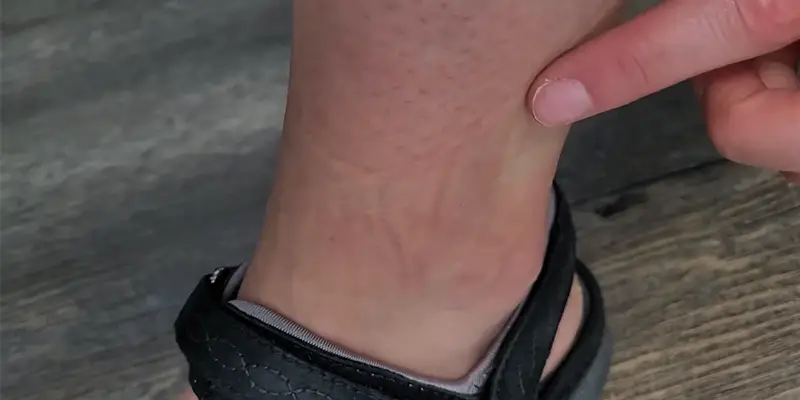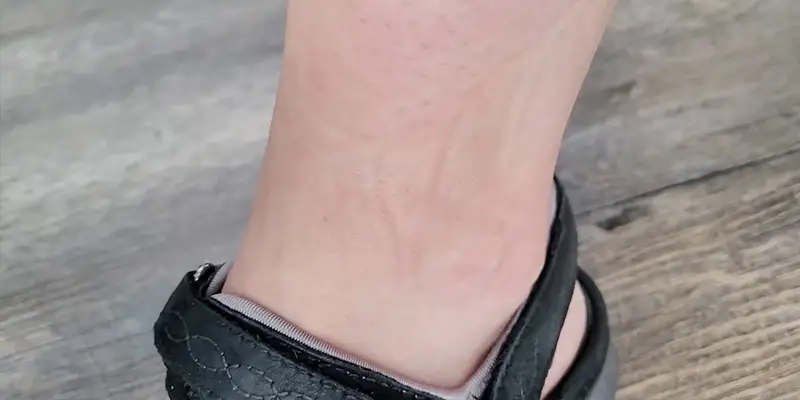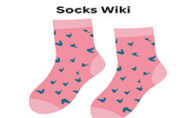Hi, I'm Christopher Bevans, the creator of SocksWiki.com. With a background in fashion design and a passion for innovation, I’m here to share my knowledge on socks from troubleshooting tips to detailed buying guides. I believe the right pair of socks can make all the difference, and through this site, I aim to help you find the perfect fit for every occasion.
Hi, I'm Christopher Bevans, the creator of SocksWiki.com. With a background in fashion design and a passion for innovation, I’m here to share my knowledge on socks from troubleshooting tips to detailed buying guides. I believe the right pair of socks can make all the difference, and through this site, I aim to help you find the perfect fit for every occasion.
Sock marks on the legs are a common experience for many people, often noticed as indentations or impressions left by the elastic bands in socks.
While usually harmless, these marks can sometimes be a sign of underlying issues like swelling or poor circulation.
Understanding why these marks occur and how to prevent them can help ensure better comfort and potentially highlight health concerns that need attention.
This guide explores the reasons behind sock marks, offers tips on how to prevent them, and answers frequently asked questions to help you manage and avoid this common annoyance.
When Socks Leave Marks on Legs?

When socks leave marks on your legs, it’s usually a sign that the elastic in the socks is compressing the skin and underlying tissues.
This can happen for a few reasons:
Tight Socks
The elastic bands in socks are designed to keep them in place. If the socks are too tight or the elastic is particularly strong, they can constrict the skin, leading to noticeable indentations or marks.
Additionally, if your legs or feet swell slightly during the day due to standing, sitting for long periods, or heat, the socks might leave marks as they compress the swollen area.
Circulation Issues
Socks leaving marks can also be a sign of edema, a condition where fluid builds up in the tissues, causing swelling.
This can be due to various factors, including prolonged standing, sitting, or certain medical conditions such as heart, kidney, or liver issues.
Poor blood circulation, often linked with conditions like diabetes, varicose veins, or venous insufficiency, can cause fluid to accumulate in the lower extremities, making the skin more susceptible to indentations from socks.
Weight Gain
Weight gain can increase the circumference of your legs and feet, causing your socks to fit more snugly. This snug fit can result in marks as the socks compress the skin.
Sitting or Standing for Long Periods
When you sit or stand for extended periods, gravity causes blood and other fluids to pool in the lower extremities. This can lead to slight swelling, making it easier for socks to leave marks.
Material and Construction of Socks
Socks made from synthetic materials like nylon or polyester may have less give compared to those made from natural fibers, increasing the likelihood of leaving marks.
Some socks are designed with tighter elastic bands around the top to prevent them from slipping down, and these socks are more likely to leave marks compared to those with looser bands.
How to Get Rid of Sock Marks on Legs?
Preventing sock marks from appearing on your legs involves a combination of choosing the right socks, managing any underlying health conditions, and adjusting your daily habits.

Choose the Right Socks
Opt for socks that have a gentle elastic band or are designed to be non-binding. These types of socks are often labeled as “diabetic socks” or “circulation socks,” and they are made to reduce pressure on the skin.
Selecting socks made from natural fibers like cotton or bamboo can also help, as these materials tend to be softer and more breathable, reducing the likelihood of marks.
If you notice that your socks are too tight, consider trying a larger size to ensure a more comfortable fit.
Manage Swelling
If you experience swelling in your legs or feet, addressing this issue can help prevent sock marks.
Elevating your legs periodically throughout the day can reduce swelling by encouraging fluid to drain away from the lower extremities.
Staying hydrated and reducing your salt intake can also help manage fluid retention, which is a common cause of swelling.
Regular exercise can improve circulation, which in turn reduces the likelihood of fluid pooling in your legs.
Take Breaks and Move Regularly
Sitting or standing for long periods can cause fluid to accumulate in your legs, making them more susceptible to sock marks.
Taking regular breaks to walk around or stretch can help improve circulation and prevent fluid buildup.
If you have a job that requires you to be on your feet or sitting for extended periods, try to take short walks or do leg exercises every hour.
Wear Compression Socks if Necessary
For those with circulation issues or chronic swelling, wearing compression socks can be beneficial.
These socks are designed to apply pressure to the legs, helping to improve blood flow and reduce swelling.
However, it’s important to choose the correct level of compression and fit, so you may want to consult a healthcare professional for advice.
Monitor Your Health
Persistent sock marks, especially if accompanied by swelling, pain, or changes in skin color, could be a sign of an underlying health issue such as poor circulation, edema, or venous insufficiency.
If you notice these symptoms, it’s a good idea to consult a healthcare provider to address any potential health concerns.
Managing conditions like diabetes, high blood pressure, or heart disease can also help reduce the risk of developing sock marks.
Frequently Asked Questions
Why Do My Socks Leave Marks on My Legs?
Socks leave marks on your legs because the elastic compresses your skin, especially if the socks are tight or if your legs swell slightly throughout the day. This is usually harmless but can indicate swelling or circulation issues.
Do Diabetic Socks Leave Marks?
Diabetic socks are designed to minimize pressure, so they usually don’t leave marks. If they do, it might be due to improper fit or underlying swelling.

Hi, I'm Christopher Bevans, the creator of SocksWiki.com. With a background in fashion design and a passion for innovation, I’m here to share my knowledge on socks from troubleshooting tips to detailed buying guides. I believe the right pair of socks can make all the difference, and through this site, I aim to help you find the perfect fit for every occasion.
- Latest Posts by Christopher Bevans
-
Socks Smell Like Ammonia: Causes and Solution
- -
Best Socks Material for Sweaty Feet 2026
- -
What Socks to Wear With Cowboy Boots?
- All Posts



For newest information you have to pay a quick visit world-wide-web and on web I found this web
page as a most excellent web site for latest updates.